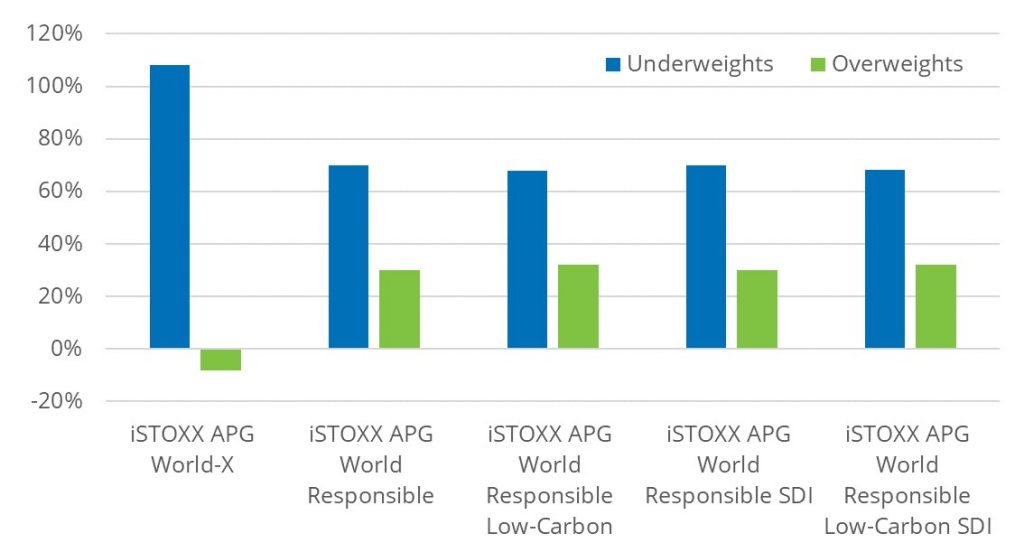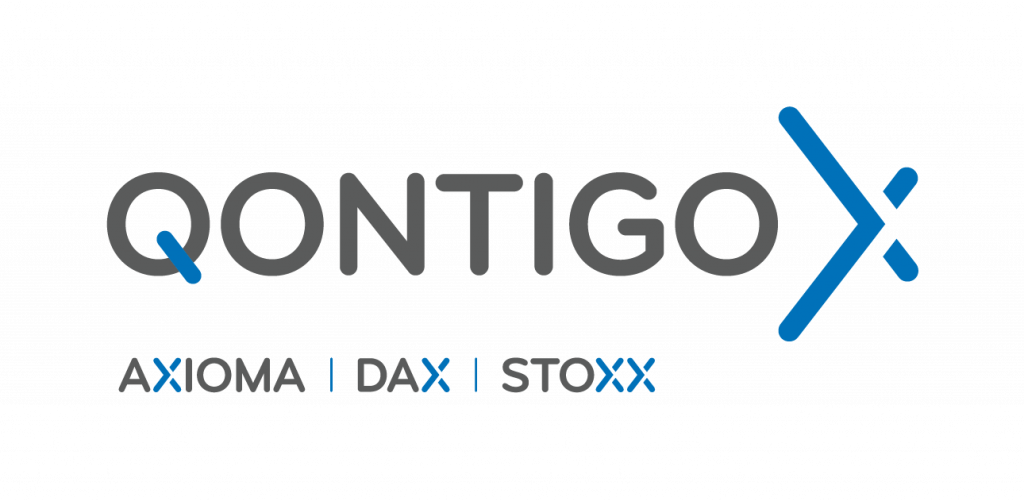
FlexShares, Northern Trust Asset Management’s ETF unit, has launched the FlexShares Emerging Markets Low Volatility Climate ESG UCITS ETF (ticker: QVFE) and the FlexShares Emerging Markets High Dividend Climate ESG UCITS ETF (ticker: QDFE), which track respective STOXX indices1 and follow on the successful listing earlier this year of similar strategies on developed markets.
The funds employ a quantitative multi-factor model that integrates Northern Trust’s proprietary view of quality while targeting exposure to, respectively, low volatility and high dividend stocks. Additionally, constituents are screened for their ESG attributes, while taking a history-aware and forward-looking approach to manage climate risks and ESG considerations. The methodology resulted from a close collaboration between FlexShares and Qontigo, manager of STOXX indices.
To hear more about the launch and why FlexShares believes the timing is right to implement such strategies in emerging markets (EM), we caught up with Abhishek Gupta, the company’s Senior Quantitative Strategist.
Abhishek, there are several ingredients that make up these funds’ strategies. How do they each help achieve your objectives?
“That’s right. The investment philosophy behind the strategies is to capture the excess returns from rewarded factors such as quality, low volatility and dividend yield while controlling for sector, region, country and security-level biases that add to risk but not to returns.
“We have successfully employed this philosophy for 25 years across our strategies, and it has shown to produce better risk and return outcomes for investors.”
“A key component of the strategies is our quality score. Here, we take a multi-dimensional approach to identify companies that are profitable, have strong cash flows and are efficiently managed; while being sector- and region-neutral, as well as sector-specific where appropriate. When combined with other factors, quality helps us separate the wheat from the chaff — for example, in dividend strategies it helps us avoid those dividend payers that lack the ability to sustain and grow their payouts.
“The strategies also implement a holistic view of sustainability that takes a best-in-class approach and looks to exclude controversial businesses and those with questionable governance practices, while integrating our proprietary ESG score and climate data. The objective is to have a portfolio of constituents that are efficiently managing the risks and opportunities arising out of ESG and climate issues and avoiding those that are poorly managing them.”
Why are you offering these strategies on emerging markets now?
“Emerging markets have been the primary driver of global economic growth and wealth accumulation for a number of years now. Emerging economies hold a dominant share of global natural resources and have a young working population. At the same time, they are going through major economic and structural shifts as their financial and regulatory systems mature, technology adoption grows rapidly, and incomes and quality of life continue to improve. This presents a robust, long-term investment opportunity for investors.
“In today’s low-rate environment, investors need to broaden their sources of income as well as diversify them. With strong economic growth and earnings momentum, a number of EM companies can be an attractive source of returns and income for investors.”
“While EMs offer an outstanding growth opportunity and have provided strong returns, they have also experienced elevated volatility and extreme drawdowns compared with developed markets. Investors are mindful of these risks. Here’s where we think a low-volatility strategy provides an opportunity to participate in the long-term economic premia of emerging markets with reduced risk.
“Uncertainty around growth and inflation expectations, the future path of the pandemic, and the unravelling of concentration risks in some sectors are some of the potential factors that can lead to increased volatility in EM in the near term. A well-diversified low-volatility strategy can help investors manage these risks.”

A building block approach to sustainability portfolios
Download our new research paper to learn how portfolios can be built that provide more attractive sustainability characteristics – without taking on too much risk.
Download >What makes your high-dividend and low-volatility strategies stand out from similar approaches that investors may find in the market?
“The issue with a number of available high-dividend strategies is that they just focus on companies’ dividend yields. We believe that a singular focus on maximizing yield is not the right approach to dividend investing. A high dividend yield can be a function of a drop in the share price, driven by the deterioration of a company’s busines prospects. Secondly, this approach can lead to concentration in certain sectors and regions, which if not controlled can dominate the risk profile of strategy. Within our offering, integrating our proprietary view of quality and ESG helps us identify those dividend payers that have the ability to sustain and grow their payouts. Combined with a risk-aware approach, it provides investors with a healthy dividend yield while aiming to generate consistent returns and help meet ESG and climate objectives.
“With regards to low-vol strategies, our quality score provides for a forward-looking view of volatility, unlike peer strategies that solely rely on historical volatility to identify low volatility stocks. Further, our tighter risk controls around sector and region exposures help us effectively manage inherent risks prevalent in low-volatility strategies, such as interest-rate risk and climate risks.
“Finally, in both strategies we take a history-aware and forward-looking approach to managing climate risks and ESG issues. From a climate risk standpoint, we achieve a 50% lower carbon footprint while tilting the portfolio towards companies better positioned to manage the transition to a low-carbon economy.”
Receive valuable insights, news, and event invitations as soon as they are published.
Subscribe >The rollout of ESG strategies in emerging markets has been comparatively slow, with criticism around the quality of available data. Where are we in that sense?
“ESG data in emerging markets is still work in progress, and that is something we have been conscious of in the design of our EM products. However, the situation has improved dramatically over the last three to five years: regulators and exchanges are coming together to enhance ESG reporting and disclosure. Here, the Sustainability Accounting Standards Board (SASB) is emerging as a global reporting standard, with more and more EM issuers following its recommendations. Our proprietary view of ESG considers SASB guidelines to identify financially material issues and integrates it with frameworks proposed by the Task Force on Climate-related Financial Disclosures (TCFD), to form a view of companies’ ESG risks and opportunities.”
This is truly a comprehensive strategy that, as discussed, has several legs and ingredients. What is the role of the index provider in the whole process?
“The index is like the engine that makes the entire approach work. For FlexShares, Qontigo was the partner who could combine our ESG and quality scores, together with leading climate and factor data, into a rules-based, transparent and sophisticated system. We also needed an index provider with deep and reliable coverage of emerging markets, and we found that too within STOXX’s capabilities.”
1 The underlying indices are the iSTOXX® Northern Trust Emerging Markets Low Volatility Climate ESG Index and iSTOXX® Northern Trust Emerging Markets High Dividend Climate ESG Index.

Qontigo is a leading global provider of innovative index, analytics and risk solutions that optimize investment impact. As the shift toward sustainable investing accelerates, Qontigo enables its clients—financial-products issuers, asset owners and asset managers—to deliver sophisticated and targeted solutions at scale to meet the increasingly demanding and unique sustainability goals of investors worldwide.
Qontigo’s solutions are enhanced by both our collaborative, customer-centric culture, which allows us to create tailored solutions for our clients, and our open architecture and modern technology that efficiently integrate with our clients’ processes.
Part of the Deutsche Börse Group, Qontigo was created in 2019 through the combination of Axioma, DAX and STOXX. Headquartered in Eschborn, Germany, Qontigo’s global presence includes offices in New York, London, Zug and Hong Kong.



